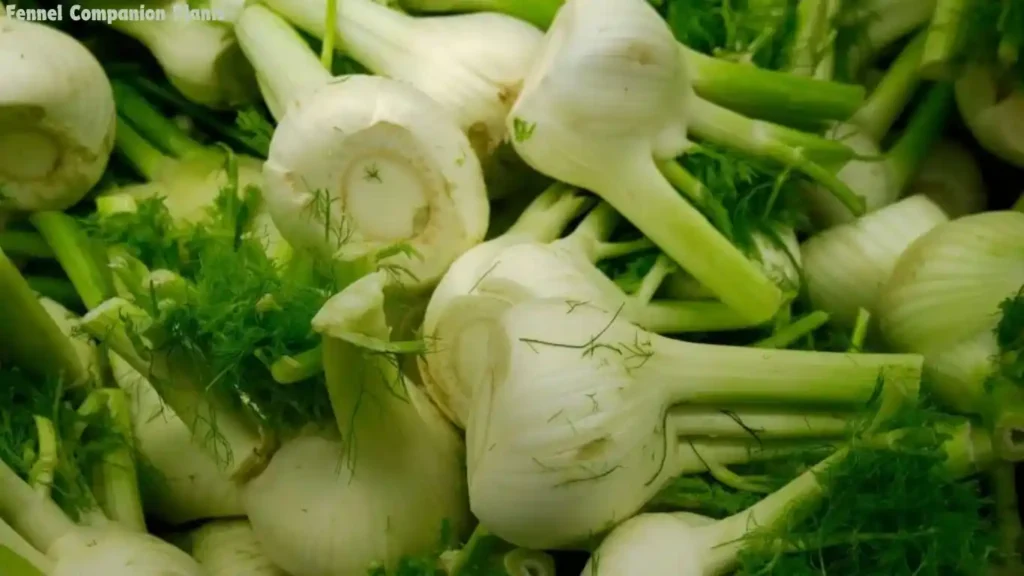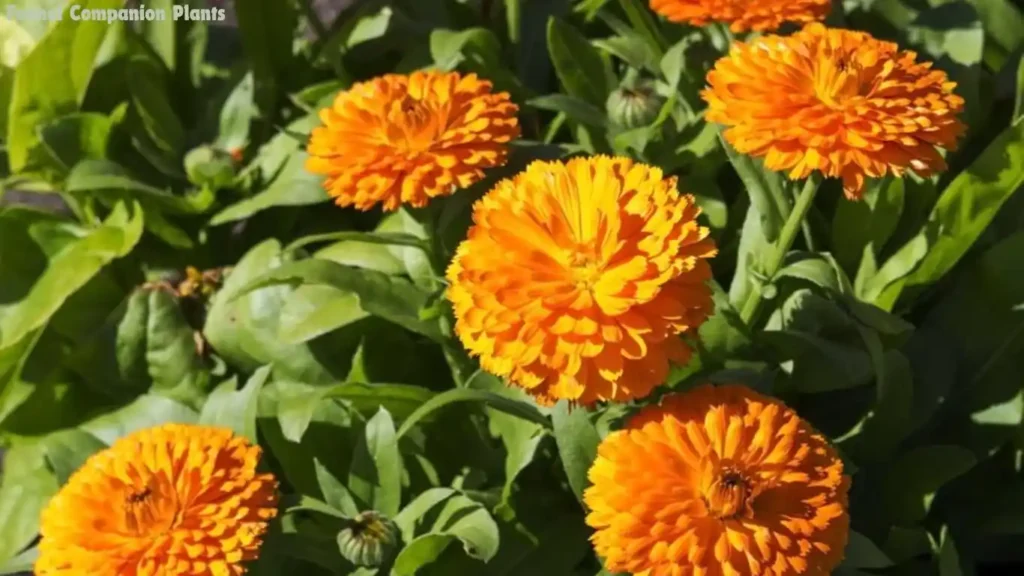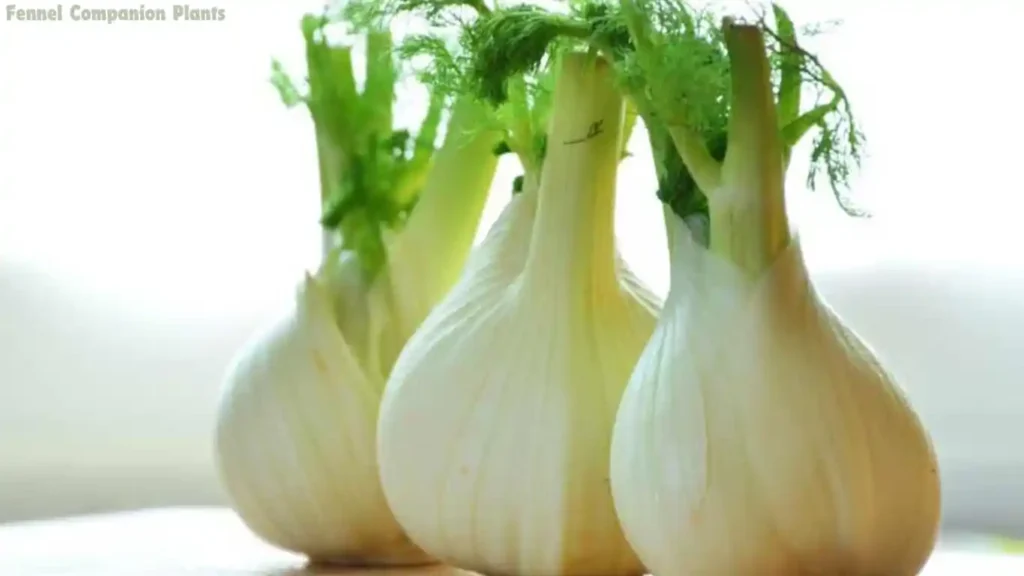How to Grow Best Fennel Companion Plants & Characteristic
While leaping into the universe of growing, you’ll rapidly discover that not all play well together. This is where the idea of a sidekick setting comes in.
This article will explore the fascinating connections between fennel and its companion plants.
You’ll find how to make a flourishing, friendly nursery by comprehending which plants improve fennel’s growth and which ones to bypass.
Understanding Fennel Companion Plants
The Fundamentals of Fennel: Fennel (Foeniculum vulgare) is a constant flavor area of the Mediterranean location. It features cushioned green foliage, and its tall, invalid stems can show up at up to six feet in level.
Plants are revered for their anise-like flavor, which spreads the word about it well to both excellent and sweet words. The plant produces masses of minimal yellow blooms, which last structure into seeds always used as a taste.

Fennel Varieties: There are two head sorts of fennel: spice fennel Plants and Florence fennel (generally called bulb fennel).
Flavor fennel is fundamentally created for its leaves and seeds, while Florence fennel Plants are produced for its enlarged, bulb-like stem base.
Each collection offers unknown benefits and uses in the kitchen and greenhouse. Zest fennel Companion Plant is commonly used in teas and upgrading, while Florence fennel can be fretted, examined, or eaten inclement.
The Concept of Fennel Companion Plants
Benefits of Friend Planting: Friend planting includes designing various plants together to advance shared edges, for example, bother control, heightened development, and other developed yields.
Via cautiously choosing associate plants, grounds-keepers can make a more modified and maintainable greenhouse environment.
The benefits include regular vermin demoralization, better fertilization, and professional utilization of nursery space. For Companion Plants and fellow plants, these advantages can be extremely verbal when matched with the right accessories
Original Basis: Friend planting is a respected practice that traces all the way back to old actions. Native people groups, like Local Americans, utilized the “Three Sisters” strategy, showing corn, beans, and squash together to help each other’s evolution.
This procedure has been gone down through ages and is always largely utilized today. The checkable progress of buddy setting features its viability in making tough and useful greenhouses.
Fennel Companion Plants Characteristics
Expansion Inclinations: Is a fast budding plant that grows in full sun and very much depleted soil. It can grow up to six feet tall and has a powerful taproot framework. The plant is fairly dry spell-safe because of its profound belowground root growth.
Fennel Plants padded leaves and umbels of little yellow blossoms add a sharp touch to plant type, while its perfumed quality makes it an among greenhouse workers.

Soil and Environment Tips: Fennel Plants prefer marginally acidic to neutral soil with a pH scope of 6.0 to 7.0. It grows in very depleted, prolific soil and can take a variety of soil types, including sandy and earthy soils.
Fennel Plants fill best in calm environments yet can likewise adjust to both hotter and cooler areas. It requires full sun openness for something like six hours per day to deliver solid foliage and seeds.
Best Fennel Companion Plants
Dill: Dill and fennel Plants are often considered unusual helpers because of their relative development bents and helpful properties.
Both have a place with the Apiaceae family and can boost each other’s development. In any case, it’s necessary to show them somewhat isolated to stay away from cross-fertilization, which can affect the flavor and nature of their seeds.
Coriander: Coriander, otherwise called cilantro, is a beautiful ally for fennel Plants. The sweet-smelling properties of the two plants can help with slowing vermin, showing more bug-safe greenhouse conditions.
Also, coriander can further develop the fennel Companion Plant’s taste shape when close by.
Mint: Mint’s solid perfume can assist with repelling bugs that annoy fennel. In any case, be aware of mint as it may be very pushy.
Showing mint in rooms close to fennel Plants has some control over its spread while as yet offering the benefits of pain dismay.
Fennel Companion Plants to Evade Near
Tomatoes: Tomatoes and fennel Plants don’t make great friends. Fennel Plants can hinder the growth of tomatoes, starting depressing yields.
The synthetics produced by fennel can adversely affect the progress of tomato plants, making it important to keep them isolated in the greenhouse.

Carrots: Carrots and fennel are another painful mix. Fennel can stunt the growth of carrots and lead to impaired roots.
This negative association can result from the allelopathic properties of fennel, which delivery boosts that hinder the growth of typical plants.
Beans: Beans, mainly shaft beans, ought to be evaded fennel. Fennel’s allelopathic effects can block the passage of beans, making them fight. This polarity can produce reduced bean products and generally painful plant well-being.
Guide Planting for Pest Control
Fennel and Aphid Control: Fennel draws in useful bugs like ladybugs and parasitic wasps, which feed on aphids. These normal hunters can help with directing aphid populations, reducing the necessity for substance pesticides.
Showing fennel close to aphid-inclined plants can make a more adjusted and solid greenhouse biological system.
Regular Problem Blocks: As well as pulling in useful bugs, fennel can be matched with plants like basil and marigolds to repel hurtful disturbances.
Basil and marigolds discharge smells that stop bugs, protecting fennel and other close by plants. This regular problem block method can prompt a better greenhouse with fewer bug-connected problems.
Improving Soil Health: Nitrogen Fixation: While fennel doesn’t fix nitrogen, setting it near vegetables like peas and beans can further design soil nitrogen levels.
Vegetables have the unique ability to fix nitrogen in the soil through their favorable connection with nitrogen-fixing microorganisms.
This enhancement benefits fennel and other close by plants by giving essential supplements that promote better growth.
Natural Matter Advancement: Buddy plants like comfrey and borage can help improve soil well-being by adding natural matter when they break down.
These plants can be used as green compost, moving the dirt with critical accessories as they divide. This natural matter further develops soil structure, water care, and accessory accessibility, setting ideal growing conditions for fennel.
Guide Fennel Companion Plants in Containers
Holder Nursery Thoughts: Growing fennel in holders offers adaptability and comfort, mainly for groundskeepers with limited space.
Checking fennel with associated spices like thyme and oregano in holders can make a small spice garden that looks delightful and gives new zest to culinary use.
Pick holders with substantial waste and sufficient space for the fennel’s root basis to succeed.
Information for Little Spaces: Picking a sidekick that will not rival Fennel for assets is basic in Little Spaces. Spices like parsley and chives are glorious conclusions for container planting with fennel.
These minimal plants can coexist nicely with fennel, augmenting room utilization while giving extra culinary benefits.
Fennel Companion Plants in Herbal Medicine
Therapeutic Benefits of Fennel: Fennel Plants have a long history of meaning in natural medication because of their different medicinal properties.
It is ordinarily used to help processing, mitigate gas and bulging, and clear gastrointestinal pain.
tea is a famous solution for stomach-connected issues and can be made by washing squashed fennel Plant seeds in burning hot water.
Also, fennel has calming and cell support properties, making it helpful for general talking, well-being, and wealth.
Necessary Herbs: Corresponding fennel Plants with other healthy spices can improve its helpful impacts—herbs like sage and rosemary complement fennel Plants well, both in improved and medicinal properties.
Sage is known for its antimicrobial and mitigating properties, while rosemary has cancer-deterrence agents and mind-upgrading effects. These spices can make natural, solid solutions for various well-being problems.
Culinary Uses of Fennel Companion Plants and Fellows
Taste Pairings: Fennel’s particular flavor conforms well with different herbs and vegetables, enhancing the flavor of dishes with its inconspicuous pleasantness and clue of licorice.
It supplements fixings like basil, garlic, and onions, adding profundity and intricacy to recipes. Fennel plant seeds are ordinarily utilized in zest mixes and marinades to grant their unique flavor profile to dishes.
Recipes and Cooking Tips: Integrating fennel Plants and their friends into your cooking can raise your culinary manifestations.
Have a go at making a reviving fennel Plants and dill salad, joining daintily cut fennel bulbs with new dill, lemon juice, and olive oil.
On the other hand, broil fennel Plants with coriander seeds for a fragrant and delightful side dish. Explore different avenues about various recipes and cooking methods to find the adaptability of fennel Plants in the kitchen.
Conclusion
All in all, associating planting with fennel Plants offers various advantages for landscapers hoping to make a flourishing and useful greenhouse.
By choosing the right friend plants, you can boost fennel’s development, deflect bugs, and further develop soil wellbeing.
From herbs like dill and coriander to blossoms like marigolds and calendula, there are a lot of options to look over while putting your fennel Plants associate garden.
By combining friend-selecting techniques into your cultivating rehearses you can make a fun and large greenhouse that supports plant well-being and biodiversity.
For more planting tips and appeal, remain tuned to our site and explore the number of assets available to assist you with creating your fantasy garden.
FAQS
What can you not plant next to fennel?
Keep fennel Companion Plants away from plants that power harm, such as tomatoes, beans, and peas. A good rule of thumb is to plant fennel at small 4 to 5 feet out from these exposed plants.
Can I plant fennel with tomatoes?
Fennel isn’t a good partner for most garden vegetables and should be grown in a small patch or pool by itself. “Don’t plant near brush beans, kohlrabi, or tomatoes because it hinders their growth,” according to the Colorado State University Extension Service.
Can you plant fennel with carrots?
Fennel: Fennel Companion Plants are known to hinder the growth of many plants, including carrots. It secretes a chemical called anethole that can check the growth of nearby plants and also draws problems such as aphids.
What does fennel keep away?
Fennel: Repels aphids, slugs, and snails. Lemon cream: Repels mosquitoes. Oregano: Repulses many problems. Parsley: Repels asparagus beetles.
What is the best fertilizer for fennel?
Fertilization: When bulbs develop, apply 3 tablespoons of nitrogen-based fertilizer (21-0-0) for every 10 feet of row. Fennel Companion Plants need average amounts of nitrogen but have low phosphorus and potassium conditions.
What herbs can you plant with fennel?
Fennel + Dill: Fennel Companion Plants is an allelopathic plant, suggesting that it can hinder growth or even destroy many garden plants. One of the few plants that can stay with fennel is dill, which can offer a stabilizing effect for fennel seeds. Fennel Companion Plants also help to prevent aphids in the garden.
Also Read
